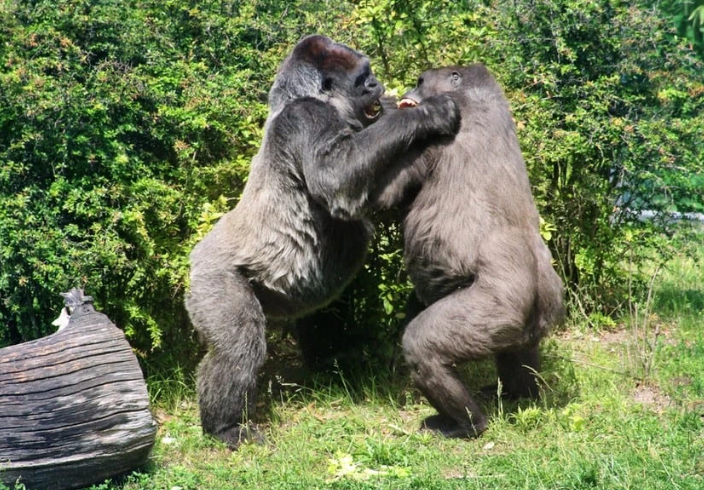How Do Gorillas Signal Aggression?
Understanding how gorillas communicate aggression is not only fascinating but also vital for researchers, wildlife enthusiasts, and anyone interested in animal behavior. Gorillas, as highly intelligent and social creatures, use a variety of signals to express their feelings and establish their status within a troop. Recognizing these signals can help us appreciate their complex social structures and improve our conservation efforts.
Body Language: The Importance of Posture
Gorillas primarily use body language to signal aggression. When a gorilla feels threatened or wants to assert dominance, it may stand tall and puff up its chest. This posture makes the gorilla appear larger and more imposing, which can intimidate rivals or potential threats. Additionally, aggressive gorillas may engage in purposeful movements, such as stomping or charging, to convey their seriousness. By observing these physical cues, other gorillas within the troop can quickly assess the situation and respond accordingly, either by backing down or preparing for a confrontation.
Vocalizations: The Sound of Warning
Vocalizations play a significant role in how gorillas communicate aggression. They produce various sounds, such as grunts, roars, and barks, to convey their feelings. A deep, loud vocalization typically indicates that a gorilla is feeling threatened or is about to engage in aggressive behavior. Lower-frequency sounds are often used to assert dominance over rivals, while higher-pitched sounds may signal distress. Understanding these vocal cues not only helps researchers monitor gorilla interactions but also enhances the ability to protect these animals in their natural habitats.
Facial Expressions: The Window to Emotion
Facial expressions are another crucial aspect of how gorillas signal aggression. When a gorilla displays its teeth, it may not always indicate aggression as it usually does in humans. Instead, showing teeth can signify fear or submission in specific contexts. However, gorillas also express aggression through more subtle facial cues, such as narrowed eyes or a furrowed brow. These expressions can help signal challenges or provoke responses from other gorillas. By studying these facial signals, scientists can gain deeper insights into the emotional states of gorillas and their social dynamics.
Conclusion
Understanding how gorillas signal aggression enriches our knowledge of their behavior and social interactions. By paying attention to body language, vocalizations, and facial expressions, we can gain a more profound appreciation for these extraordinary animals. If you’re interested in learning more about gorillas and their fascinating social structures, consider visiting a wildlife sanctuary or getting involved in conservation efforts. Every bit of knowledge contributes to a greater understanding and protection of these magnificent creatures.

